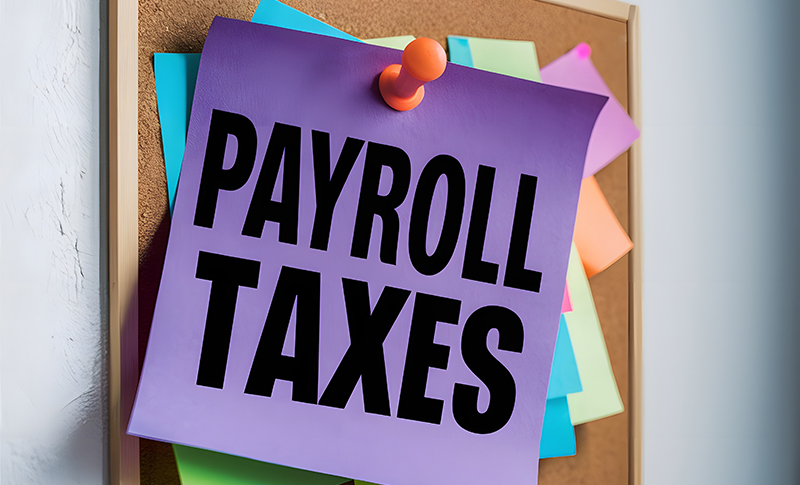Can I Deduct Long-Term Care Premiums?
August, 08 2023 by Steve Banner, EA, MBA
This question brings to mind that well-known quote about the only two things that are certain in life: death and taxes. Although we all know that one day we will die, we just don’t know exactly upon which date that inevitable event will take place. If we did, it would be very helpful for planning purposes so that we could make sure to have spent the last dollar in our retirement accounts within 24 hours of our expiration date. And we could have polished off the last of those decadently delicious chocolate chip cookies left in the jar with a clear conscience. But alas, the exact date of our departure from this mortal life is unknown to us and so, in the meantime, we must keep paying taxes until our number is called.
But we are now living longer lives than ever before, thanks to advances in hygiene, nutrition, and health care. The average life expectancy in the US has risen from 47 years in 1900 to 58 years in 1950 and 79 years in 20191. As a result, not only are we living longer, but we are also incurring higher medical costs than ever before. For that reason, many taxpayers have taken the opportunity to buy long-term care insurance to offset the healthcare expenses they expect to incur in their later years that are not fully covered by Medicare.
The good news is that, at tax time, taxpayers can often deduct part or all of the premiums they pay for long-term insurance for themselves or a dependent. You can also deduct any unreimbursed expenses for qualified long-term services that you have received. As is usually the case when we talk about tax deductions, there are rules to apply and conditions to meet, so let’s review them before we go any further.
Policy Conditions
The deduction is only available for qualified long-term care insurance premiums paid for a contract that provides only coverage of qualified long-term care services. The contract must meet all the following conditions:
- It must be guaranteed renewable,
- It must not provide for the payout of a cash surrender amount or other money that can be paid, borrowed, pledged, or assigned,
- It must provide that any refunds or dividends from the contract (apart from refunds upon the complete surrender or cancellation of the contract or upon the death of the insured) must be used only to increase future benefits or reduce future premiums, and
- It must generally not pay or reimburse expenses incurred for services or items that would be reimbursed under Medicare, except where Medicare is a secondary payer or the contract makes per diem or other periodic payments without regard to expenses.
Premium Deduction Amount Limitations
The amount of the premiums you can deduct is limited based on your age. These amounts are indexed each year. The table below shows the maximum deductible amount for premiums paid in 2022 and 2023 for each person covered by the long-term care contract.
| Age 40 or below | Age 41-50 | Age 51-60 | Age 61-70 | Age 71 or above | |
| 2022 | $450 | $850 | $1,690 | $4,510 | $5,640 |
| 2023 | $480 | $890 | $1,790 | $4,770 | $5,960 |
For example, Joel was 56 years old in 2022 and paid $200 per month in long-term care insurance premiums for himself during the year. According to the table above, his maximum deduction for those premiums is limited to $1,690 instead of the $2,400 he paid for the year.
Deduction Limitations
Taxpayers who are eligible to itemize their deductions using Form 1040 Schedule A can enter their eligible medical expenses for themselves and their dependents under the heading of Medical Expenses. They would also include their long-term care expenses under this category. The total allowable deduction for medical expenses, however, is limited to the amount that exceeds 7.5% of the taxpayer’s adjusted gross income (AGI) for the year.
For Joel, in our previous example, his AGI for 2022 was $100,000, and he had $7,000 in eligible medical expenses during the year in addition to the $1,690 he can claim for long-term care insurance premiums. He is itemizing his deductions, which means that he can claim the portion of his medical expenses that exceed $7,500 ($100,00 AGI x 7.5%). His deduction for medical expenses on Schedule A is limited to $1,190 ([$7,000 + $1,690] - $7,500).
On the other hand, the situation is quite different for self-employed taxpayers. In this case, you are not limited to the 7.5% threshold for deducting long-term care insurance premiums. You can instead deduct the eligible amount of your premiums as a business expense. The only other limitation is that the amount of your deduction may not exceed your earned income from your business.
Coming back to Joel once more, let’s say he is self-employed. Using the same income and expense figures we discussed earlier, Joel could deduct $1,690 for his long-term insurance premiums as a business expense. If he also itemizes his other personal deductions on his return, he would not be able to deduct his $7,000 in other medical expenses because this amount does not exceed 7.5% of his AGI ($7,500).
To summarize our discussion, your long-term care insurance premiums may indeed be tax-deductible under specific conditions. The amount of your deduction is based on age and whether you itemize your deductions or are self-employed.
[1] https://www.health.harvard.edu/blog/why-life-expectancy-in-the-us-is-falling-202210202835





